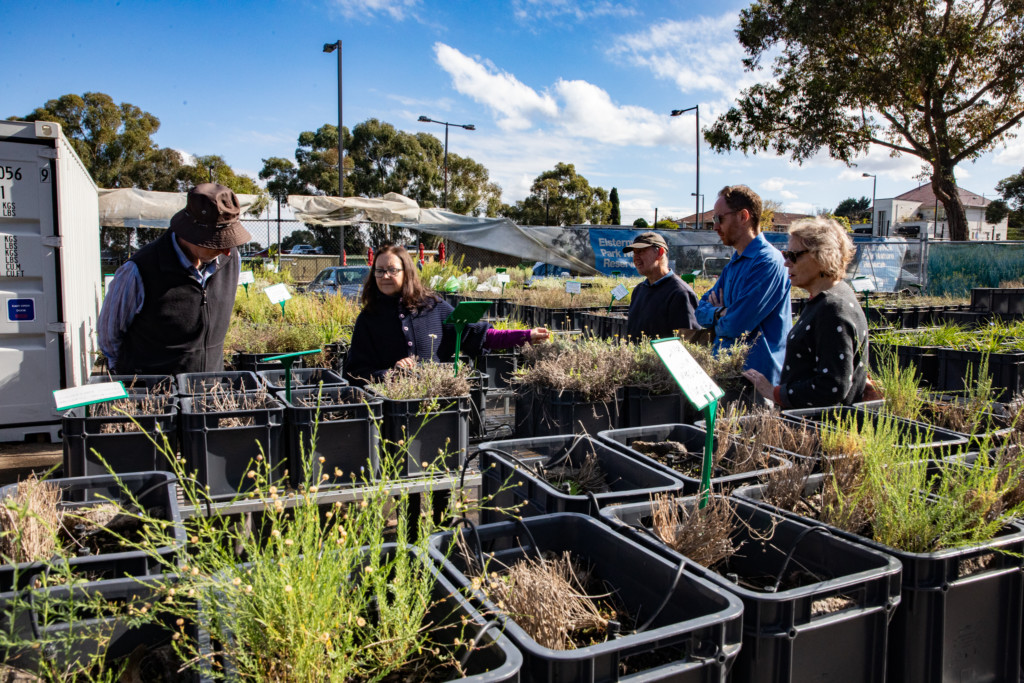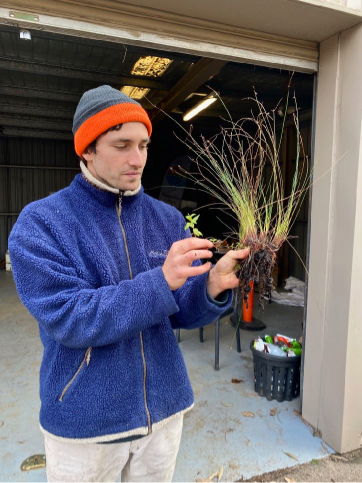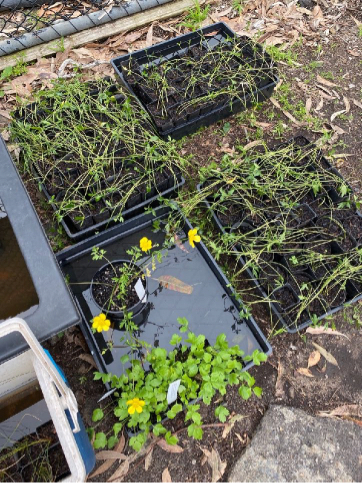

The Plant Lab is the Yalukit Willam Nature Association’s very own plant and seed propagation facility. The Lab is volunteer run and plans to supply the Yalukit Willam Nature Reserve with thousands of plants per year. The Plant Lab endeavours to grow the rare, difficult or inconspicuous plant species, which are often forgotten in nurseries and revegetation projects. These will make all the difference in our aim to restore and build biodiversity. Ongoing propagation will remain essential in maintaining populations even after the initial establishment of the reserve’s plantings. It will give the plants the help they need to overcome impediments to natural regeneration such as weeds, climate change, missing pollinators, lack of fire etc.
There’s nothing more exciting than seeing a plant that you grew thrive, while providing homes or food for wildlife. The Plant Lab offers an opportunity for people to participate in the creation of the nature reserve. We encourage you to join us in making the reserve a special place, and being a part of our community. All skill sets, ages and abilities are welcome to come along to our Plant Lab volunteer days. You do need to be an YWNA member to participate.
The Plant Lab team is Gio Fitzpatrick, Jo Samuel-King, Claire Hudson and Sophia Clark. Email- epaplantlabcoordinator@gmail.com
Current Plant Lab and SPA times
Session times: Wednesdays and some Saturday mornings.
YWNA are offering both weekday and weekend sessions to meet most volunteer’s preferences and to fulfill the planned work for the needs of our beautiful reserve at this stage.
Every Wednesday 2.30 – 5pm
Saturday afternoon sessions -Third 3rd Saturday of every month
2.30-5pm
You do need to be a YWNA member to participate. This helps us cover our basic costs to run these activities as we are a volunteer-run association.
We hold Plant Lab activities on the last Saturday of every month with our Working Bee. This is for the whole community as you do not need to be a member to attend
PLANT LAB PROTOCOLS








Dr Tricia Wevill (YWNA Committee), lecturer in Environmental Sciences, showing Plant Lab volunteers how to propagate microlaena.
YWNA Plant Lab volunteers helped set up the SPA (Seed Propagation area). The area was set up with the guidance of researchers working with Melbourne University. If you are you can watch this video of a very similar SPA set up at Burnley.


Yalukit Willam Nature Reserve Seed Cleaning Guide By Julie Beatty
YWNA is extremely fortunate to have such a talented cohort supporting our activities in the reserve. To read the guide please follow link here. Or read below.


Feature plant Microseris sp.
Myrnong/Yam Daisy | This week at the Plant Lab- | |
Which one is which ?
| Murnong was the main staple food for the Wurundjeri Aboriginal people until the mid-1840s, when the introduction of sheep rendered this hillslope yam virtually extinct. Murnong produces gangly, milky, white tuberous roots that may be eaten raw or baked. They can be prepared warm with butter, included in salads, mixed with other vegetables, or turned into a paste for desserts. They taste sweet and slightly coconutty. The slightly bitter leaves are also edible and may be enjoyed in salads with a vinegar dressing. |
Growing requirements
Cultivation notes from recent study…Dry-air after-ripened murnong seeds need to be sown in the nursery in autumn (March-April) to produce tubers. This is important to allow the plants enough time to complete flowering by early December before entering summer dormancy to prevent heat stress and allow tuber survival underground… Transplanting dormant tubers was much more successful than field-sowing seeds. Significantly more tubers regenerated than seeds germinated in the restoration sites. …The tubers also produced more leaves more quickly than seedlings, which made them better at competing with weeds. Most tubers flowered, produced healthy seeds and survived to transition into summer dormancy while all seedlings died before flowering… Ref:Victorian Landcare Magazine – Summer 2021, Issue 80 |

